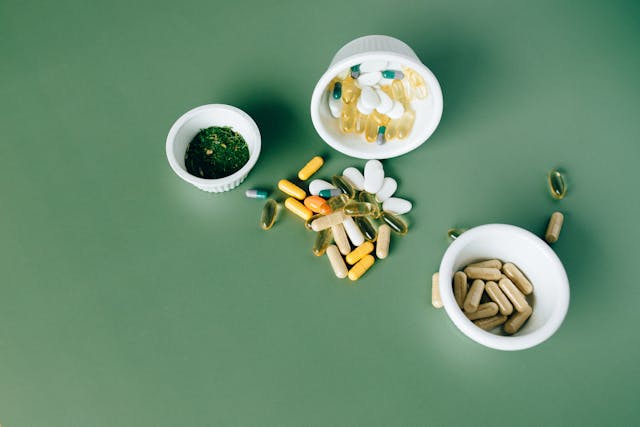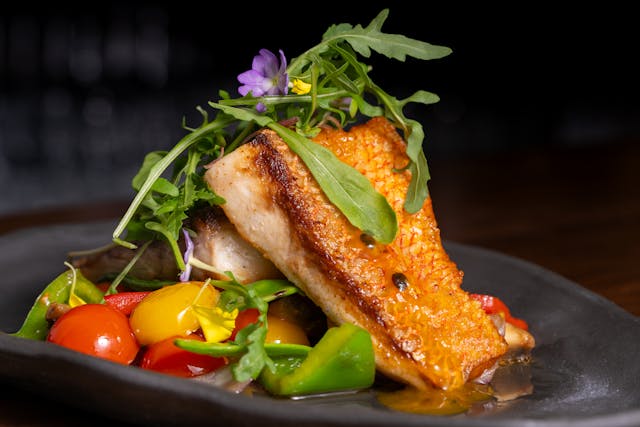A high-protein diet is more than a trendy nutritional plan; it’s a proven approach to improving health, boosting metabolism, and supporting fitness goals. From weight loss to muscle gain, protein plays a central role in fueling the body and promoting overall well-being. Let’s dive into the benefits of a protein-rich diet, explore various protein sources (including vegetarian options), and answer common questions about optimizing protein intake.
What Food Is the Highest in Protein?
Certain foods are incredibly dense in protein. The top protein-rich foods include:
- Animal-Based Sources:
- Chicken breast: 31g per 100g
- Tuna: 29g per 100g
- Lean beef: 26g per 100g
- Eggs: 6g per large egg
- Greek yogurt: 10g per 100g
- Plant-Based Sources:
- Lentils: 9g per 100g
- Chickpeas: 8g per 100g
- Tofu: 8g per 100g
- Quinoa: 4g per 100g
- Edamame: 11g per 100g
How to Get 100g of Protein a Day
Hitting 100g of protein daily may seem daunting, but it’s achievable with a balanced plan. Here’s how:
- Breakfast: 3 scrambled eggs (18g) with 1/2 cup of cottage cheese (14g).
- Snack: Greek yogurt (15g) with a handful of almonds (6g).
- Lunch: Grilled chicken salad (30g).
- Dinner: Baked salmon (25g) with a side of quinoa (4g).
Pro tip: Add protein shakes or bars to fill gaps if needed.
What Happens When You Start Eating More Protein?
Increasing protein intake can lead to noticeable changes:
- Enhanced Muscle Growth and Repair: Protein is essential for muscle synthesis, making workouts more effective.
- Increased Satiety: Protein reduces hunger by regulating appetite hormones, aiding in weight management.
- Improved Metabolism: Digesting protein burns more calories compared to fats or carbs, boosting metabolic rate.
- Stable Blood Sugar Levels: Protein helps stabilize energy by slowing carbohydrate absorption.
High-Protein Foods for Vegetarians
Vegetarians can achieve high protein intake with these options:
- Legumes: Lentils, black beans, and chickpeas.
- Soy Products: Tofu, tempeh, and edamame.
- Dairy: Greek yogurt, cottage cheese, and milk.
- Grains: Quinoa, oats, and farro.
- Nuts and Seeds: Almonds, chia seeds, and hemp seeds.
How to Increase Protein Intake for Weight Loss
Protein is a cornerstone of successful weight loss. Here’s how to boost intake:
- Eat Protein at Every Meal: Ensure each plate includes a protein source.
- Swap Snacks: Replace chips or sweets with hard-boiled eggs, string cheese, or nuts.
- Choose Lean Proteins: Opt for chicken, fish, or plant-based proteins over fatty meats.
- Use Protein Powders: Add protein powder to smoothies, oatmeal, or baked goods for an easy protein boost.
Lazy Ways to Get Protein
For those who prefer convenience, here are effortless ways to up your protein intake:
- Pre-Cooked Options: Use rotisserie chicken or pre-cooked salmon.
- Protein Snacks: Stock up on protein bars, jerky, and ready-to-drink shakes.
- Simple Add-Ons: Toss nuts or seeds onto salads and yogurt.
- Frozen Foods: Keep frozen edamame or veggie burgers on hand.
How Eating More Protein Changed My Body
When people increase protein intake, they often experience:
- Better Muscle Definition: Protein supports lean muscle growth.
- Reduced Cravings: Feeling full longer can curb unhealthy snacking.
- Steady Energy Levels: Blood sugar stability leads to fewer energy crashes.
- Improved Weight Management: A protein-rich diet can enhance fat loss while preserving muscle.
How to Increase Protein Intake for Muscle Gain
For muscle growth, prioritize protein timing and quality:
- Pre- and Post-Workout: Consume 20-30g of protein within an hour before and after exercise.
- Protein-Rich Snacks: Add high-protein snacks between meals.
- Focus on Quality: Lean meats, eggs, and whey protein are top choices for building muscle.
Conclusion
A high-protein diet can transform your health, aid in weight loss, and support muscle development. Whether you’re an omnivore, vegetarian, or busy professional looking for lazy ways to boost protein intake, there are plenty of options to fit your lifestyle. By understanding the role of protein and incorporating it into every meal, you can achieve your health and fitness goals efficiently and sustainably.


Pingback: Lead and Cadmium in Dark Chocolate: What You Need to Know - Wellness Readers Digest
Pingback: Discover the Top 10 Benefits of Vitamin D2 and D3 in Your Diet - Wellness Readers Digest
Pingback: The Ultimate Guide to a Plant-Based Diet for Kidney Disease: Foods, Benefits, and Meal Plans - Wellness Readers Digest